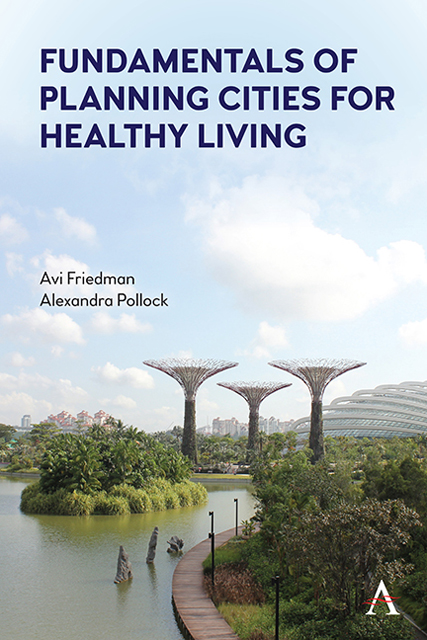Book contents
- Frontmatter
- Contents
- Preface
- Acknowledgments
- Chapter 1 The Broad View
- Chapter 2 Form, Function, and Public Health
- Chapter 3 Planning for Active Mobility
- Chapter 4 Green Open Spaces
- Chapter 5 Active Life in Winter Cities
- Chapter 6 Socializing in Communities
- Chapter 7 Food Production and Distribution
- Chapter 8 Urban Design for Healthy Aging
- Chapter 9 Public and Multi-Unit Residential Buildings and Public Health
- Chapter 10 Healthy Residences
- Chapter 11 Equitable Health Promotion
- Bibliography
- Bibliography for Case Studies
- Illustrations’ Credits
- Index
Chapter 4 - Green Open Spaces
Published online by Cambridge University Press: 10 January 2023
- Frontmatter
- Contents
- Preface
- Acknowledgments
- Chapter 1 The Broad View
- Chapter 2 Form, Function, and Public Health
- Chapter 3 Planning for Active Mobility
- Chapter 4 Green Open Spaces
- Chapter 5 Active Life in Winter Cities
- Chapter 6 Socializing in Communities
- Chapter 7 Food Production and Distribution
- Chapter 8 Urban Design for Healthy Aging
- Chapter 9 Public and Multi-Unit Residential Buildings and Public Health
- Chapter 10 Healthy Residences
- Chapter 11 Equitable Health Promotion
- Bibliography
- Bibliography for Case Studies
- Illustrations’ Credits
- Index
Summary
According to Green (2020) integrating nature into cities brings the myriad benefits of the natural world into day-to-day urban life. In addition, open spaces offer a place for physical activity, community building, and psychological well-being and provide valuable support to ecosystems. This chapter investigates the health benefits of green space beginning with a broad overview of how nature and the built environment can be integrated. Next, we describe how green spaces can be designed to promote physical activity and social interaction, improving physical and mental health outcomes. We then introduce planting and landscaping techniques to create a sense of place, spatial harmony, and various health benefits. This allows us to transition into a discussion of the relationship between biodiversity and health as well as equitable access to the outdoors. The chapter concludes with a case study of Skaftkarr, a community in the Finnish city of Porvoo.
4.1 Greening the City
By 2050, 68 percent of the world’s population is expected to live in cities (United Nations 2018). Rapid and uncontrolled urbanization is often depicted as a threat to the well-being of the Earth and its inhabitants, and not without reason: cities are associated with environmental degradation (Yale University 2020) and increased health inequalities (Kuddus et al. 2020). Urban trees filter air and remove pollution: the total annual air pollution removal by US urban trees is estimated at 711,000 metric tons, a USD $3.8 billion value (Nowak et al. 2006). “Green exercise,” or exercising in nature, has specific health benefits (Wolch et al. 2014). Lack of park access is linked to all causes and cardiovascular mortality (Coutts et al. 2010), while increased residential green space is correlated with reductions in mortality (Villeneuve et al. 2012). Green space can also reduce noise, lower temperatures, and provide food (Escobedo et al. 2010). In the wake of COVID-19, people craved to be in public green environments. A survey, conducted in late 2020, revealed that 86 percent of people want to spend more time in parks and squares than they did before the pandemic. Prolonged isolation, stress, and the inability to visit with loved ones indoors have offered people a new understanding of parks as regenerative spaces for physical and mental health preservation (Garcia 2020).
- Type
- Chapter
- Information
- Fundamentals of Planning Cities for Healthy Living , pp. 43 - 58Publisher: Anthem PressPrint publication year: 2022

